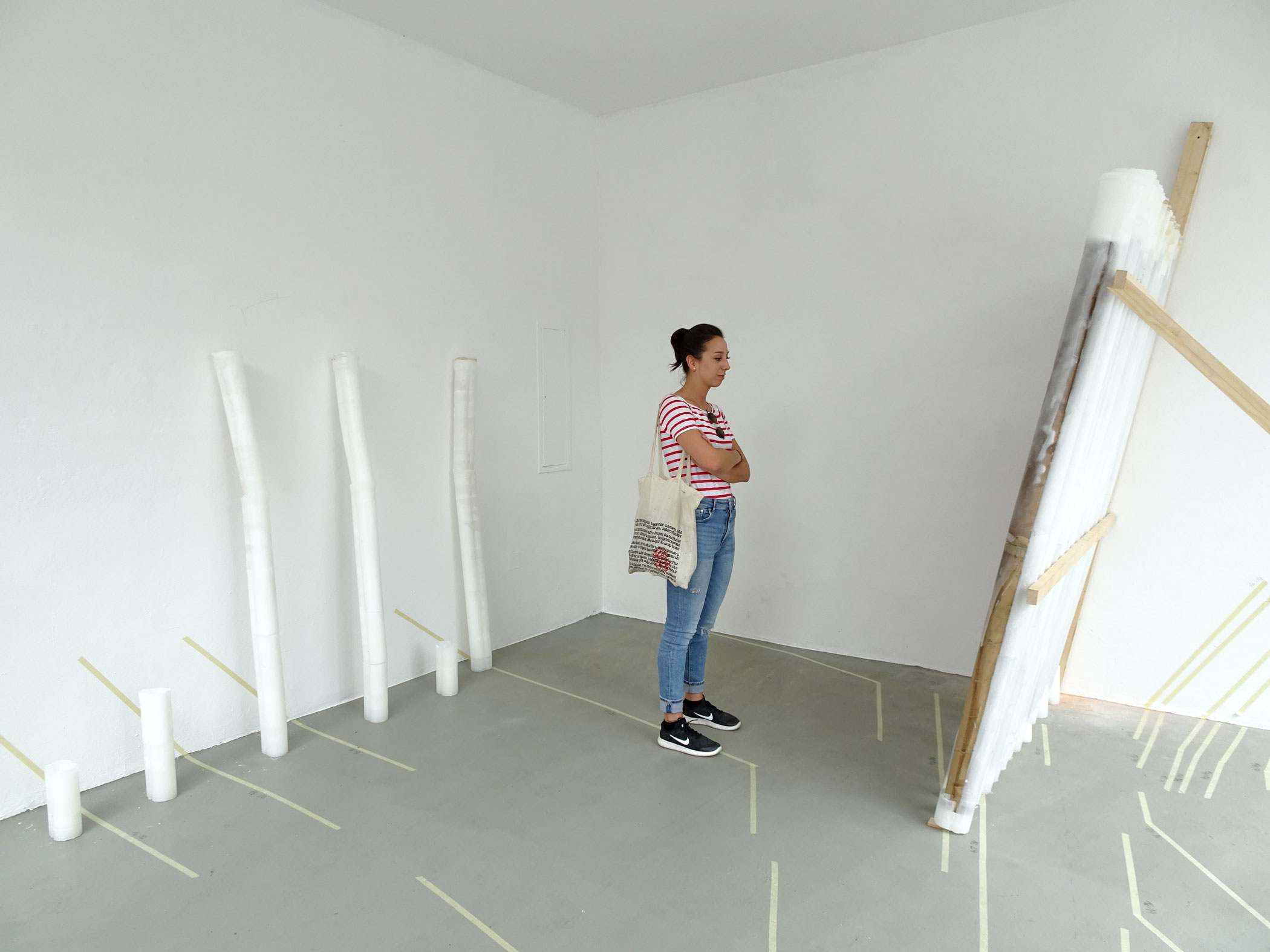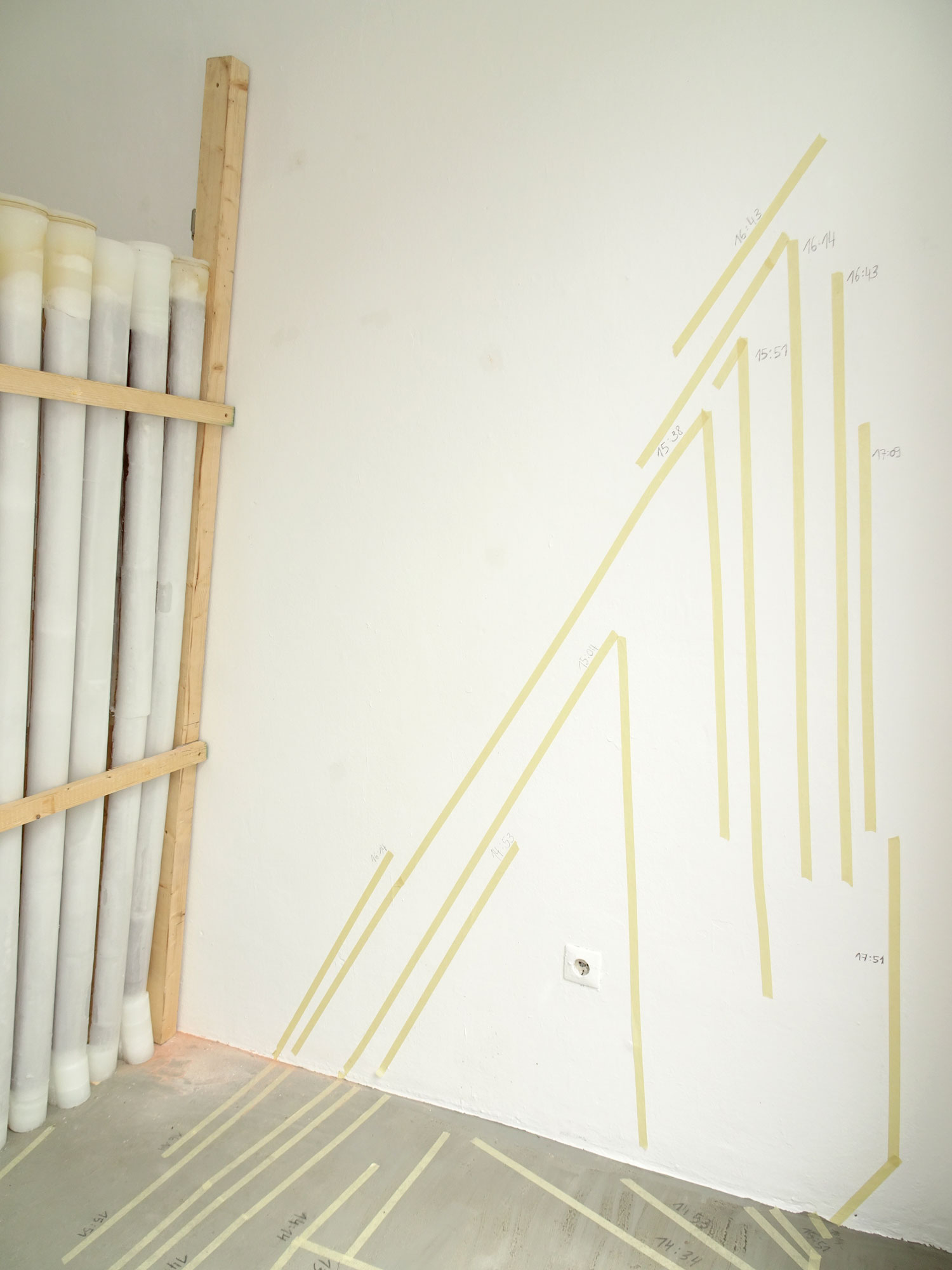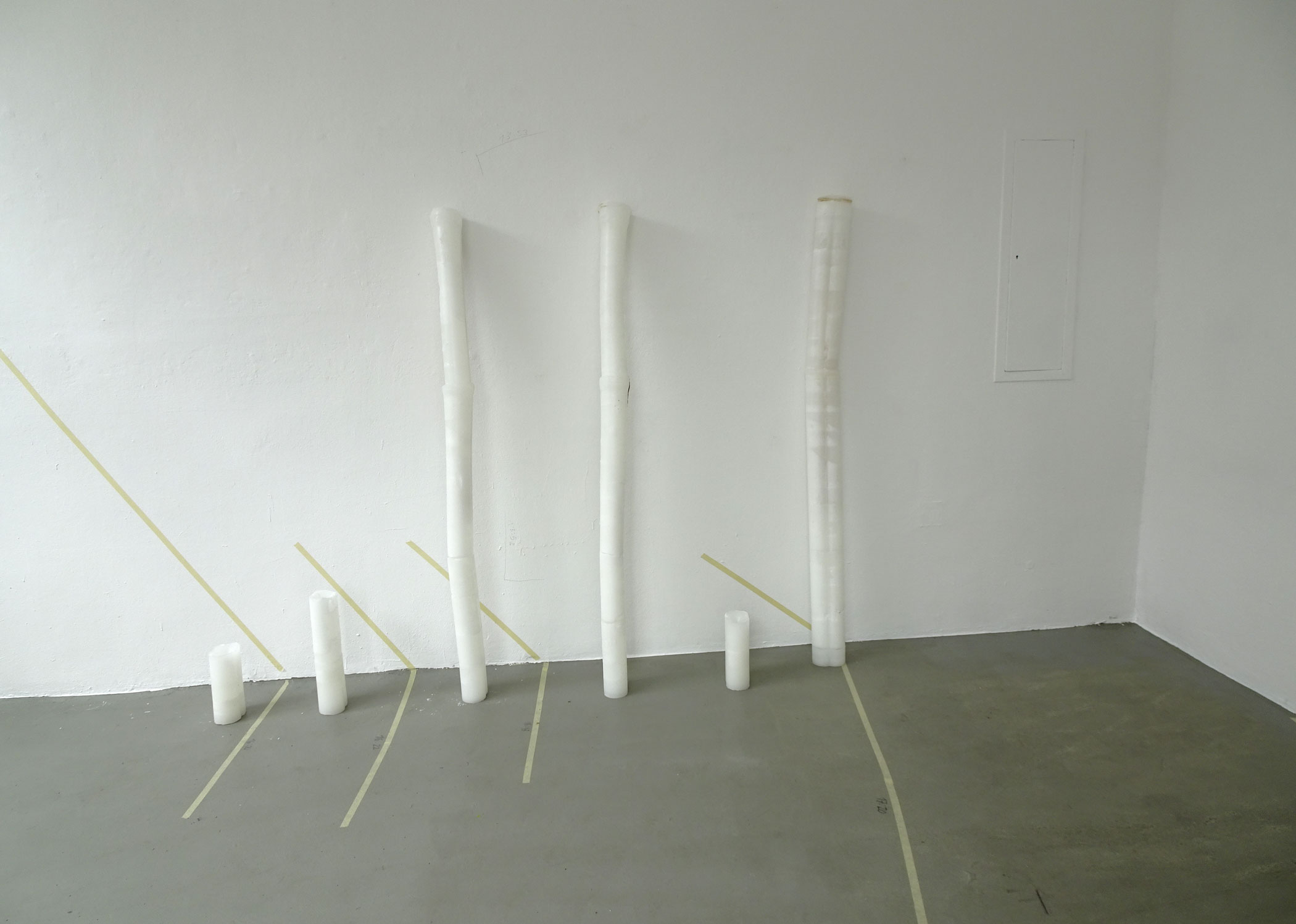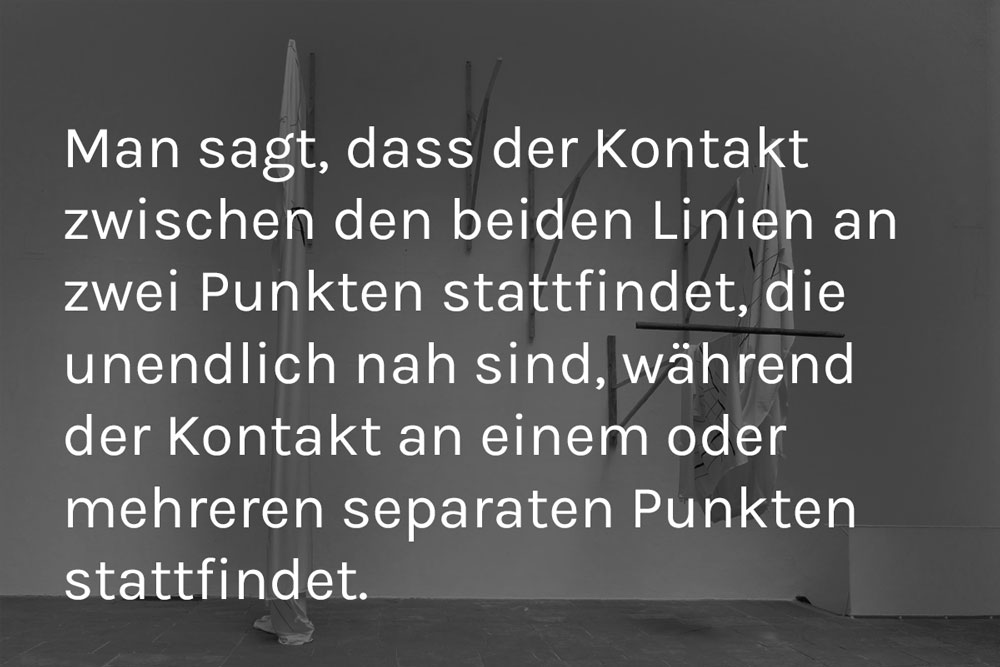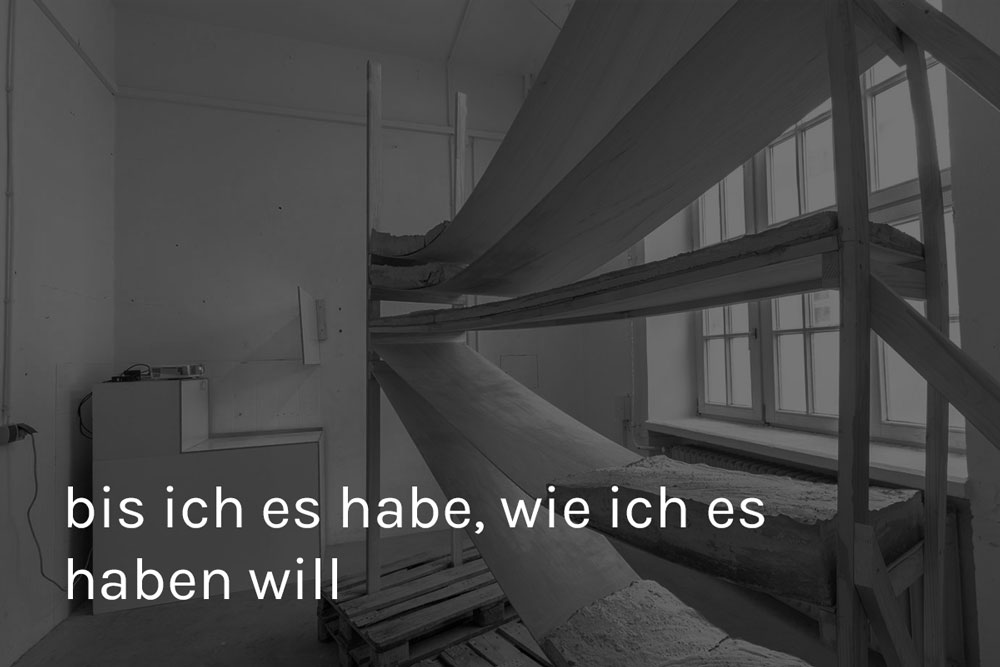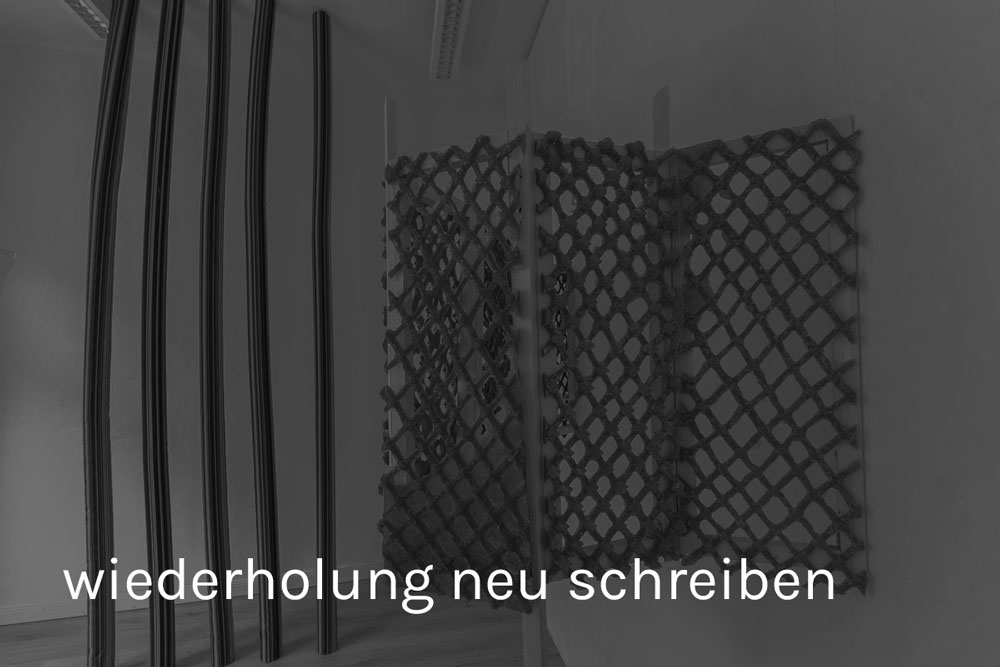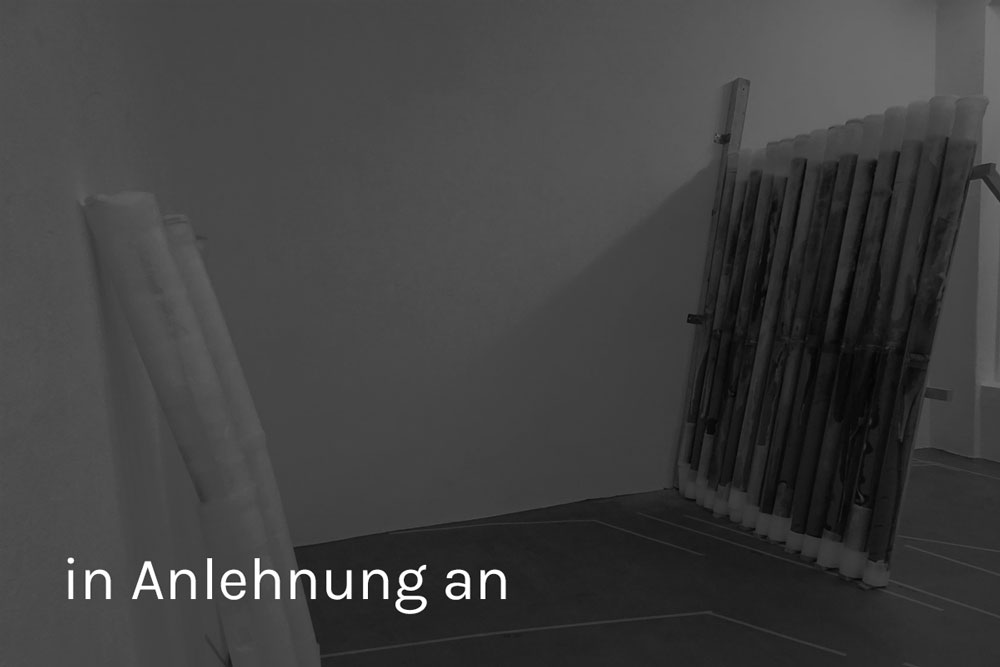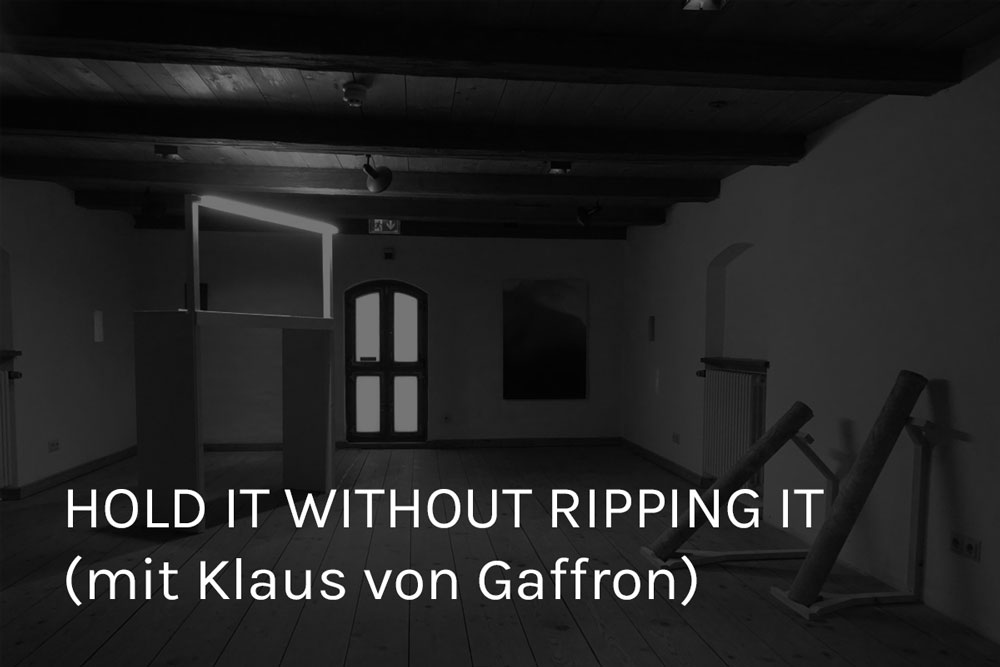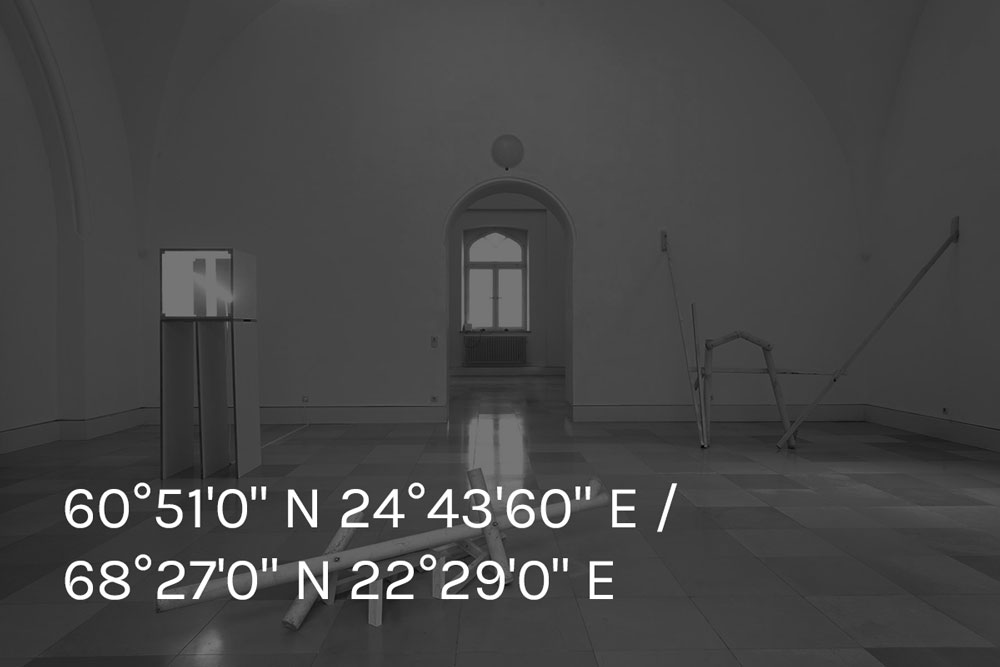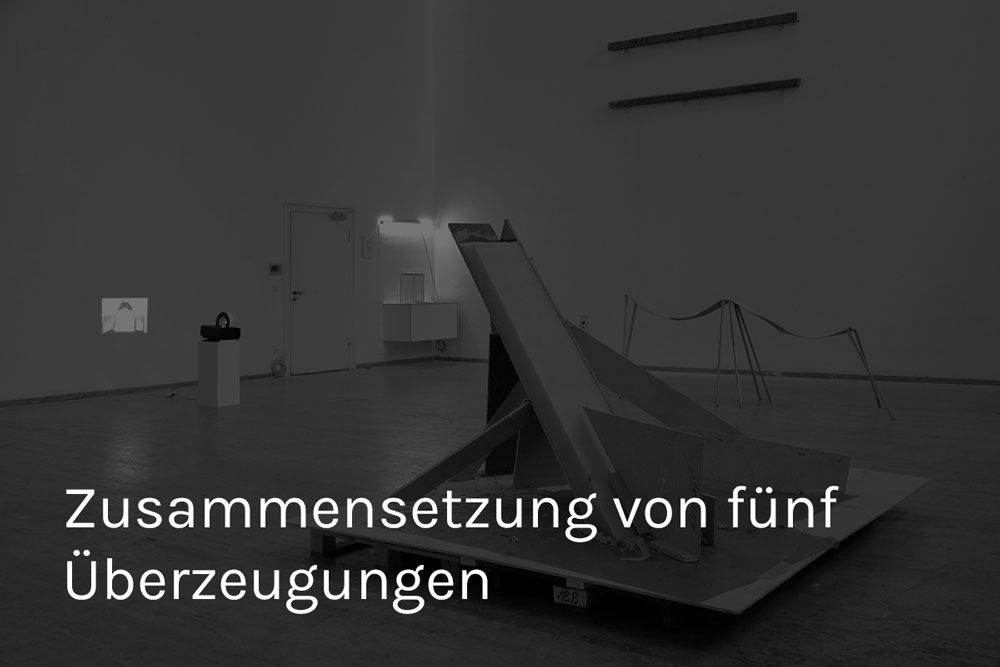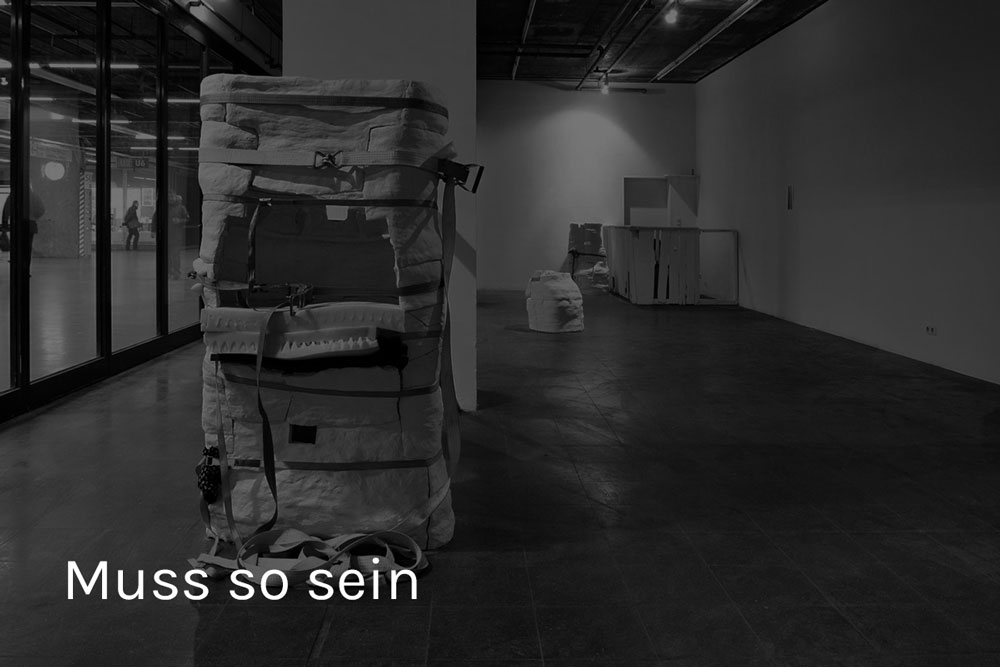in Anlehnung an
Centercourt Galerie, München 2018
Centercourt gallery, Munich 2018
Installation
Holz, Pappe, Paraffin, Klebeband
Installation
Wood, cardboard, paraffin, duct tape
Fotos/photographs: Paula Leal Olloqui

Für die Ausstellung „in Anlehnung an“ realisierte die spanische Künstlerin Paula Leal Olloqui eine raumbezogene Arbeit,
in der sie die architektonischen Eigenschaften des Raumes als Ausgangspunkt nahm, um die Parameter Höhe, Materialität,
Position und Licht in einer in-situ Installation künstlerisch zu reflektieren.
Hierzu bediente sich Paula Leal Olloqui einer Reihe vertikaler, weißlich-semi-transluzenter Paraffin-Abgüsse, die durch Kartonauskleidung stabilisiert wurden.
14 Röhren wurden an einer Holzkonstruktion zusammengefasst und ragten an der seitlichen Wand befestigt in den Ausstellungsraum. Durch Sonneneinstrahlung und Hitze waren diese Objekte einer konstanten Veränderung ausgesetzt.
Von insgesamt 32 gegossenen Röhren wurden 12 während des komplizierten Herstellungsprozesses beschädigt und drei weitere zerbrachen beim Aufbau. Diese fanden partiell als Fragmente Einzug in die Ausstellung.
Auf einer Metaebene setzte sich die Installation spielerisch mit den architektonischen Grundformen “Pfeiler”, “Säule”, “Stütze” auseinander, die sie durch den instabilen Charakter der Installation zugleich durchwegs unterlief.
Das ausgewählte Material, weißes Paraffin, spiegelte auf der Ebene der Textur die Struktur des Raumes, die glatte, wächserne Oberfläche grenzte es gleichzeitig von ihm ab.
Über Linien am Boden kartografierte die Künstlerin die Sonneneinstrahlung während des Tages, wodurch sie der Rauminstallation eine zeitliche Komponente einschrieb.
Wesentlich für die Wirkungsmacht der Ausstellung war die Tatsache, dass der Raum über Eck durch die beiden großen Fenster einsehbar ist. Die Setzung der Installationselemente nahm darauf Bezug, indem die Röhren so in der Fläche verteilt wurden, dass von einer Seite die Sicht perspektivisch versperrt wurde. Das weiße Paraffin trat hier als Fläche auf.
Von der anderen Seite hingegen konnte der Raum visuell in seiner ganzen Tiefe wahrgenommen werden.
Die Raumstruktur war damit von seiner Textur sowohl opak als auch transluzent angelegt und griff eine grundlegende Eigenschaft des Paraffins wieder auf.
(Text: Rosali Wiesheu, 2018)
Hierzu bediente sich Paula Leal Olloqui einer Reihe vertikaler, weißlich-semi-transluzenter Paraffin-Abgüsse, die durch Kartonauskleidung stabilisiert wurden.
14 Röhren wurden an einer Holzkonstruktion zusammengefasst und ragten an der seitlichen Wand befestigt in den Ausstellungsraum. Durch Sonneneinstrahlung und Hitze waren diese Objekte einer konstanten Veränderung ausgesetzt.
Von insgesamt 32 gegossenen Röhren wurden 12 während des komplizierten Herstellungsprozesses beschädigt und drei weitere zerbrachen beim Aufbau. Diese fanden partiell als Fragmente Einzug in die Ausstellung.
Auf einer Metaebene setzte sich die Installation spielerisch mit den architektonischen Grundformen “Pfeiler”, “Säule”, “Stütze” auseinander, die sie durch den instabilen Charakter der Installation zugleich durchwegs unterlief.
Das ausgewählte Material, weißes Paraffin, spiegelte auf der Ebene der Textur die Struktur des Raumes, die glatte, wächserne Oberfläche grenzte es gleichzeitig von ihm ab.
Über Linien am Boden kartografierte die Künstlerin die Sonneneinstrahlung während des Tages, wodurch sie der Rauminstallation eine zeitliche Komponente einschrieb.
Wesentlich für die Wirkungsmacht der Ausstellung war die Tatsache, dass der Raum über Eck durch die beiden großen Fenster einsehbar ist. Die Setzung der Installationselemente nahm darauf Bezug, indem die Röhren so in der Fläche verteilt wurden, dass von einer Seite die Sicht perspektivisch versperrt wurde. Das weiße Paraffin trat hier als Fläche auf.
Von der anderen Seite hingegen konnte der Raum visuell in seiner ganzen Tiefe wahrgenommen werden.
Die Raumstruktur war damit von seiner Textur sowohl opak als auch transluzent angelegt und griff eine grundlegende Eigenschaft des Paraffins wieder auf.
(Text: Rosali Wiesheu, 2018)
For the exhibition “in Anlehnung an”, the Spanish artist Paula Leal Olloqui realized a space-specific work in which she took the architectural properties of the space as a starting point in order to artistically reflect the parameters of height, materiality, position and light in an in-situ installation.
For this purpose, Paula Leal Olloqui used a series of vertical, whitish-semi-translucent paraffin casts, which were stabilized by a cardboard lining.
14 tubes were combined on a wooden structure and attached to the side wall protruding into the exhibition room. These objects were exposed to constant change through exposure to sunlight and heat.
12 out of 32 cast tubes were damaged during the complicated manufacturing process and three more broke during the construction. Some of these found their way into the exhibition as fragments.
On a meta level, the installation playfully dealt with the basic architectural elements “pillar”, “column”, “support”, which where at the same time constantly undermined by the unstable character of the installation.
The selected material, white paraffin, reflected the structure of the room on the level of texture, while the smooth, waxy surface at the same time separated it from it.
The artist mapped solar radiation during the day using lines on the floor, thereby adding a temporal component to the installation.
The fact that the room can be seen through two large windows from around the corner was essential for the powerful effect of the exhibition. The placement of the installation elements referred to this by the distribution of the tubes: the view was perspective blocked from one side. The white paraffin appeared here as a surface.
The room could be visually perceived in all its depth from the other side.
The texture of the room structure was both opaque and translucent and took up a fundamental property of paraffin.
(Text: Rosali Wiesheu, 2018)
For this purpose, Paula Leal Olloqui used a series of vertical, whitish-semi-translucent paraffin casts, which were stabilized by a cardboard lining.
14 tubes were combined on a wooden structure and attached to the side wall protruding into the exhibition room. These objects were exposed to constant change through exposure to sunlight and heat.
12 out of 32 cast tubes were damaged during the complicated manufacturing process and three more broke during the construction. Some of these found their way into the exhibition as fragments.
On a meta level, the installation playfully dealt with the basic architectural elements “pillar”, “column”, “support”, which where at the same time constantly undermined by the unstable character of the installation.
The selected material, white paraffin, reflected the structure of the room on the level of texture, while the smooth, waxy surface at the same time separated it from it.
The artist mapped solar radiation during the day using lines on the floor, thereby adding a temporal component to the installation.
The fact that the room can be seen through two large windows from around the corner was essential for the powerful effect of the exhibition. The placement of the installation elements referred to this by the distribution of the tubes: the view was perspective blocked from one side. The white paraffin appeared here as a surface.
The room could be visually perceived in all its depth from the other side.
The texture of the room structure was both opaque and translucent and took up a fundamental property of paraffin.
(Text: Rosali Wiesheu, 2018)

